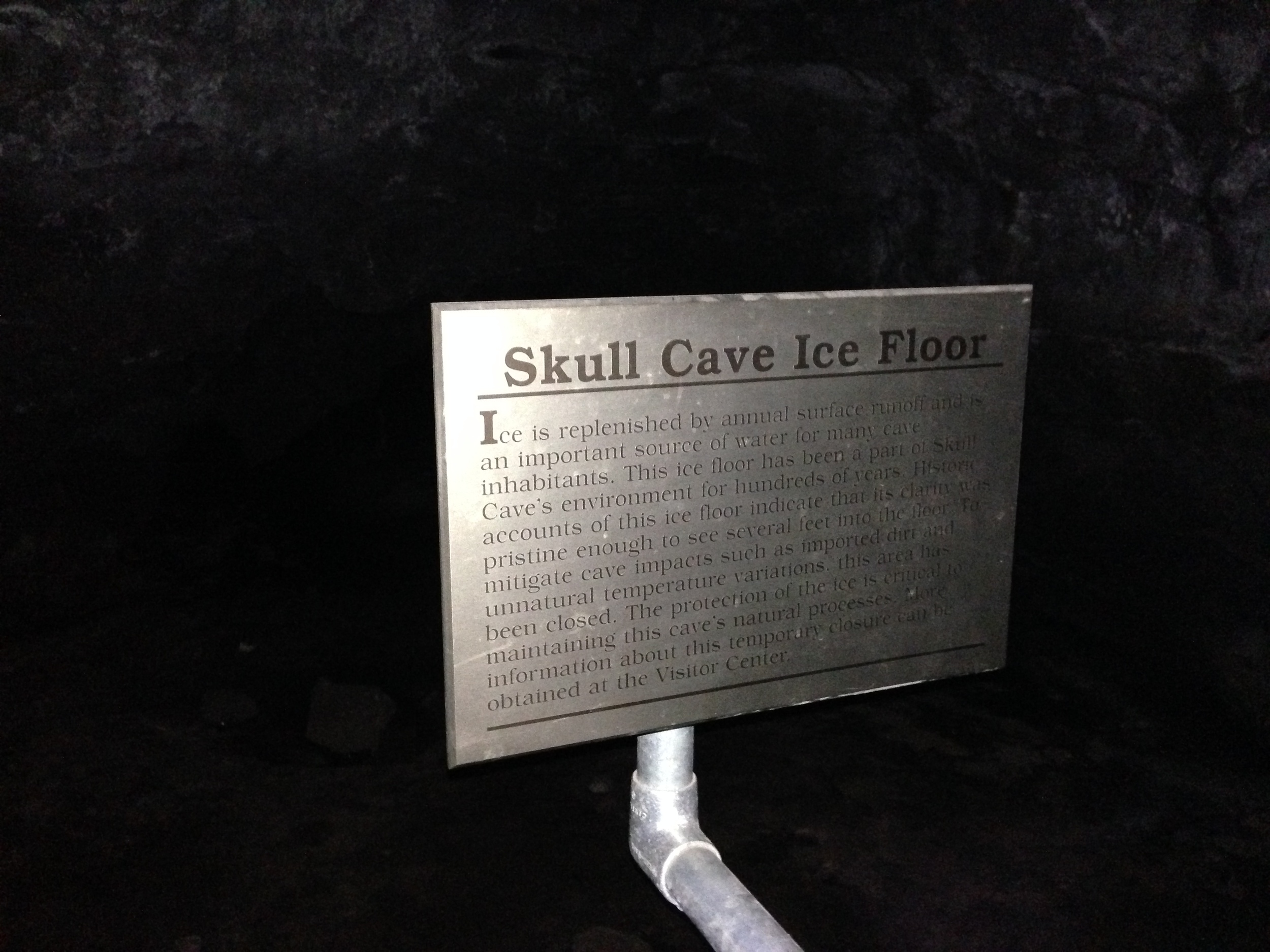Exiting Skull Cave
One of the lesser known gems of the National Park system is Lava Beds National Monument. Established in 1925, the park is home to the largest concentration of lava tube caves in the United States. Currently, over seven hundred (700) separate caves have been discovered in the park, and over twenty of these caves are accessible to the general public. That's right: over twenty of the caves are accessible to visitors. While there are many amazing things about Lava Beds - petroglyphs, hiking trails along the Medicine Lake shield volcano, interpretive displays about the Modoc War and more, the caves are the signature attraction. Unlike many National and State Parks which discourage or limit exploration of underground features to pre-set guided tours, Lava Beds encourages exploration of its many caves. And, as a matter of fact, Rangers will "rent" flashlights (no charge with a valid Driver's License) and provide information about the conditions found in the various caves within the park. One of the easiest caves to explore in the park with an interesting geologic and cultural history is Skull Cave.






Directions: Skull Cave is not located off of the main "Cave Loop" area of the park; instead, it is located two miles to the North of the Visitor Center, off of the main road. Directions to the cave are well signed on both directions of the main park road. From the parking area, the trailhead to the cave - which is a large lava tube - is readily apparent. Skull Cave is actually not just one lava tube, but two lava tubes that are stacked atop one another. And, unlike the other caves present in the park, Skull Cave is large. The size of Skull Cave makes it the perfect beginner's cave to explore, because the enormous distances involved preclude any feelings of claustrophobia inside the cave. At the beginning of the trail, one immediately gets an idea of the scope - and size of Skull Cave, as one can see into a massive opening in the rock, which by my estimation, is approximately one football field wide, and one football field tall.
While Skull Cave is interesting because it is two lava tubes stacked atop each other, it is also interesting for its cultural - and geologic history. The cave itself is named for the many animals skulls - bighorn sheep, antelope, and mountain goat found within it; and the two human skulls also found within it. The entirety of the park was home to the Modoc Tribe of Native Americans for many years; and they, along with their ancestors used the caves for a variety of reasons. Skull Cave, however, was utilized as a year-round source of water by both animals and humans in the past, because it was one of two caves in the park to have a year-round ice floor at its bottom.
Today, while the ice floor is protected from visitor access by a metal gate, it still exists (albeit much smaller than in the past). The ice floor also highlights the interesting geology present in the cave. The distance into the cave is relatively short; and the distance into the bottom of the cave is even shorter - some 580 feet. However, in that 580 feet, the temperature drops dramatically. When I visited, the ambient temperature above ground was ~85 degrees. At the entrance of Skull Cave (within .1 miles of the parking area) the temperature was ~60 degrees. By the time I reached the bottom of the cave, the temperature was slightly below 30 degrees, and all of this had occurred within 580 feet! Because of its history, its unique geology, and its beginner-friendliness, I would definitely recommend that any visitors to Lava Beds check out Skull Cave.
Tips: As mentioned above, the Rangers at Lava Beds provide free flashlights for exploration at the Visitor Center, as long as you have a valid government issued identification, and of course, return the flashlights. And, as this cave always has ice in it, be sure to dress accordingly when exploring it.
